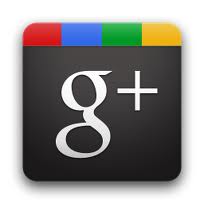
As an early adopter of social media, I’m always curious how new social media tools can be used to help build brands and business. But before I dive in and use them professionally, I prefer to explore them on a personal level.
When Google+ launched at the end of June, I knew I needed to get an invitation. It only took a little over a week before I was able to dive in. I wasn’t the only one who jumped on the Google+ bandwagon. In less than a month, Google’s latest and greatest grew to over 20 million users, making it the fastest growing social networking site in the short history of online social networking.
Google+ has a handful of interesting features that slightly sets it apart from other networking sites. The first (and probably most talked about feature) is called “circles.” Circles allow users to better organize their Google+ relationships by filtering how information is shared and received. For example, if I want to post an interesting article about PR, I don’t necessarily want to share that with group of personal friends. Instead I can share the article with only my professional circles.
Google+ also has a “hangout” feature, which encourages people to hangout via video chat. Up to 10 people can participate in a hangout session. One benefit to hangout is that it allows users to video chat within their social network, instead of having to leave a network to use a service like Skype or iChat. Facebook recently announced its plans to roll out a similar feature in the near future.
Users can also add “sparks” to their Google+ news feeds. This is somewhat comparable to liking a brand or news source on Facebook or following interests Twitter. Users can opt-in to receiving information in their news feeds based on personal interests.
The +1 option is Google’s version of the “like” button. Since the launch of Google+, websites have adopted the +1 button so Google+ users can share news and information on their Google+ accounts. If a user clicks the +1 button, the content will be added to their personal Google+ account.
As soon at Google+ launched, brands tried to jump on board. Because Google+ was encouraging individual users to adopt the service first before rolling out a brand-version, many of the initial brand accounts got the boot from Google.
At first people seemed excited about Google+ because it brought together many components of their favorite social networking sites into one place. Yes, Google+ has become somewhat of a hybrid of my favorite components of social sites, however I’ve already built up my personal Facebook and Twitter accounts, which I’m not willing to desert. My Google+ account is its on entity; what I really want to do is have a place where my current social sites can live together, not an additional site that I have to pay attention to. I imagine that others feel the same way.
So what does the future hold for Google+? Chances are that this will turn out to be yet another attempt by Google to infiltrate the social space, but much like Buzz it will be exciting for a minute and soon be forgotten.

